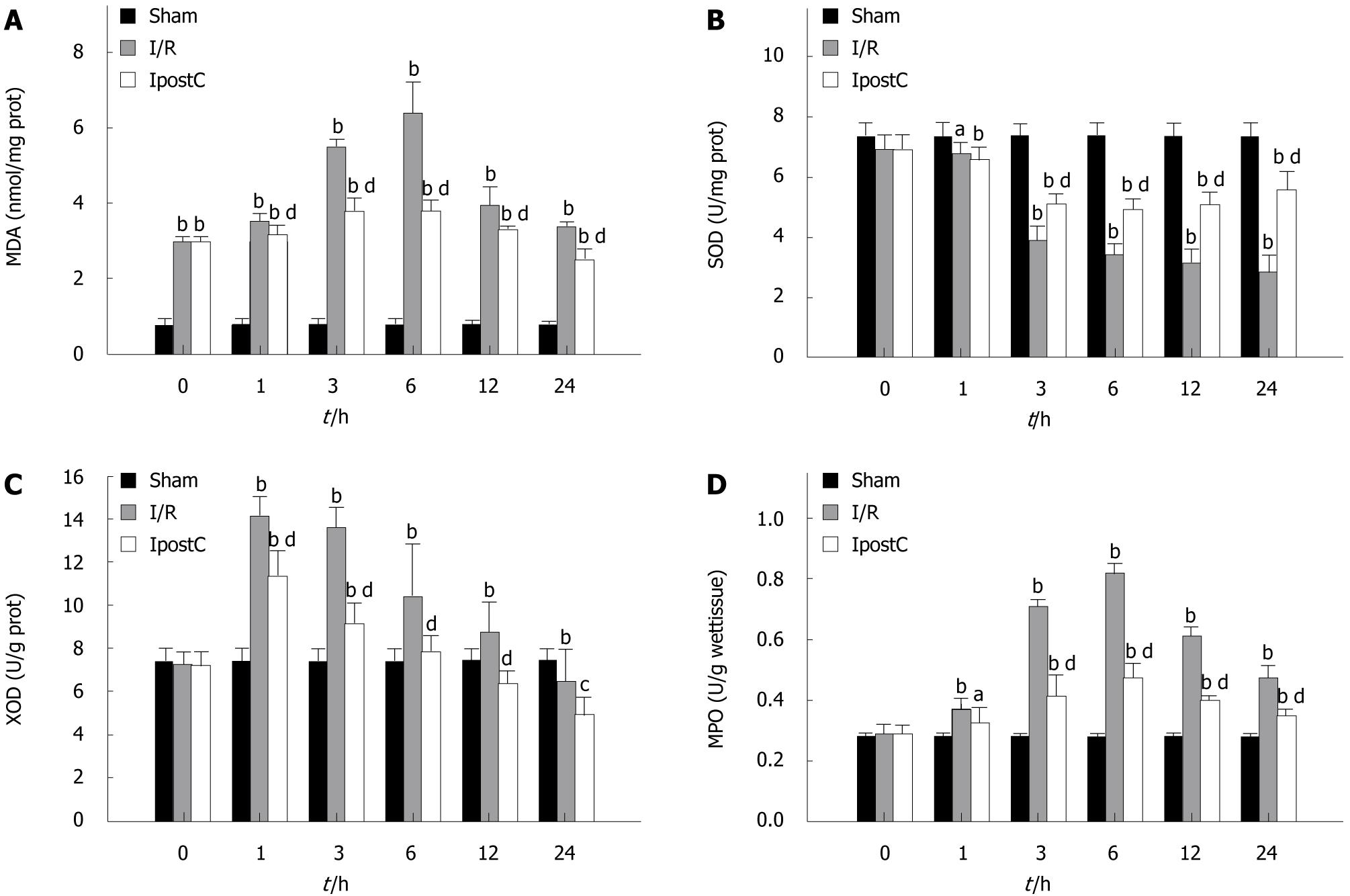Copyright
©2011 Baishideng Publishing Group Co.
World J Gastroenterol. Apr 14, 2011; 17(14): 1915-1922
Published online Apr 14, 2011. doi: 10.3748/wjg.v17.i14.1915
Published online Apr 14, 2011. doi: 10.3748/wjg.v17.i14.1915
Figure 2 Gastric oxidative stress and lipid peroxidation after gastric ischemia/reperfusion injury of 3 h of ischemia and 24 h of reperfusion (mean ± SE, n = 36).
A: The level of malondialdehyde (MDA); B: The activity of superoxide dismutase (SOD); C: The activity of xanthine oxidase (XOD); D: The activity of myeloperoxidase (MPO). The activity of SOD decreased with the activities of XOD, MPO and the level of MDA increased in the ischemia/reperfusion (I/R) group compared with those of the sham-operated group at 1, 3, 6, 12, and 24 h. However, ischemic post-conditioning (IpostC) treatment significantly increased the activity of SOD, and decreased the activities of XOD, MPO and the level of MDA at each time. aP< 0.05, bP< 0.01 vs sham group; cP< 0.05, dP< 0.01 vs I/R group.
- Citation: Wang T, Leng YF, Zhang Y, Xue X, Kang YQ, Zhang Y. Oxidative stress and hypoxia-induced factor 1α expression in gastric ischemia. World J Gastroenterol 2011; 17(14): 1915-1922
- URL: https://www.wjgnet.com/1007-9327/full/v17/i14/1915.htm
- DOI: https://dx.doi.org/10.3748/wjg.v17.i14.1915









